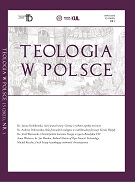Odnowa liturgiczna zainicjowana przez Sobór Watykański II przedstawia świętą liturgię jako centrum życia Kościoła. Liturgia jest już sama w sobie – jak stwierdza konstytucja Sacrosanctum concilium (SC 43) – łaską Ducha Świętego. Za jeden z najbardziej znaczących owoców tej odnowy można uznać nowe Ordo sakramentu namaszczenia chorych. W istocie nowy Rytuał ze swoją formą wyrazu i bogactwem perspektyw przedstawia nową wizję tego sakramentu. Najważniejsza zmiana dotyczy jego nazwy – zamiast o umierających (sacramentum exeuntium) mówimy teraz o chorych (unctio infirmorum). Celem moich badań jest głębsze zrozumienie obecności Ducha Świętego w namaszczeniu chorych poprzez studium aktualnego obrzędu. Rytuał zostanie przeanalizowany z pneumatologicznego punktu widzenia, a następnie dojdziemy do syntezy doktrynalnej. Zastosowałem również metodę porównawczą, ponieważ chciałem podkreślić różnice między tekstami dawnego Rytuału (1614) a tekstami obecnej liturgii (1972). Główne pytanie brzmi: W jaki sposób w nowym Ordo wyraża się obecność i działanie Ducha Świętego?
SUMMARY
The liturgical renewal endorsed by the Second Vatican Council has the Sacred Liturgy as its center: it is already in itself – as the Constitution Sacrosanctum Concilium (SC 43) states – a grace of the Holy Spirit. The new ”Ordo” of the Anointing of the Sick can be considered as one of the most significant fruits of this renewal. In fact, the new Ritual, with its articulation and richness of perspectives, presents a new vision of this sacrament. The most important amendment concerns its name which from the Sacrament of the dying (sacramentum exeuntium) becomes that of the sick (unctio infirmorum). The goal of my research is the deeper understanding of the presence of the Holy Spirit in the Anointing of the Sick through a study of the current rite. We will analyze the Ritual from the pneumatological point of view and then arrive at a doctrinal synthesis. The method used is also comparative, because I would like to highlight the differences between the texts of the old Ritual (1614) to those of the current liturgy (1972). The main question is this: How is the presence and action of the Holy Spirit expressed in the new Ordo.
Ostatnia aktualizacja: 25.01.2022, godz. 08:58 - Marcin Walczak































